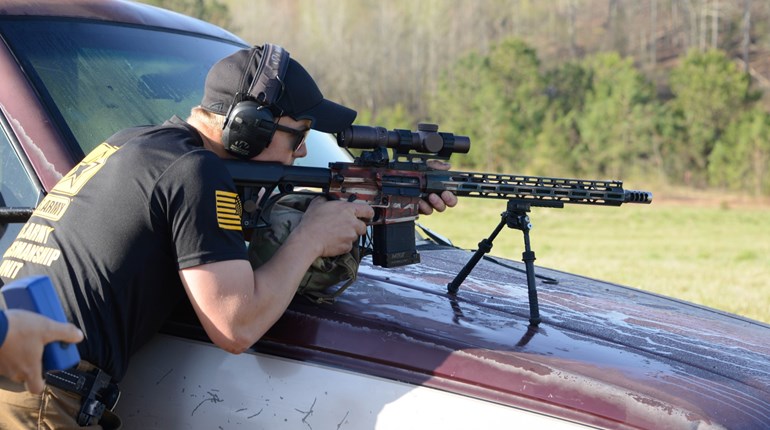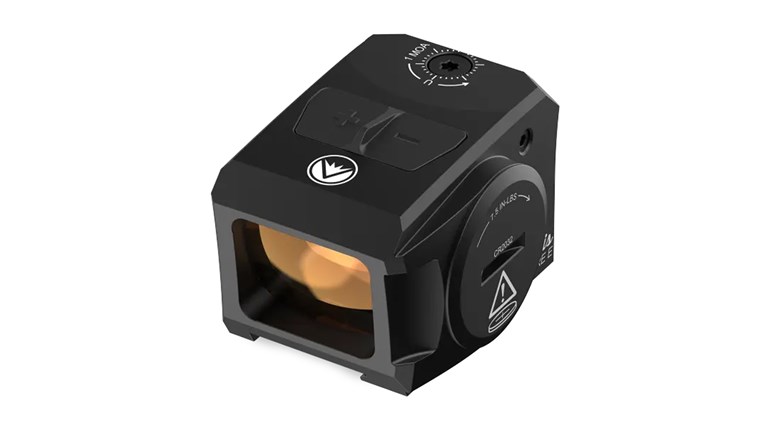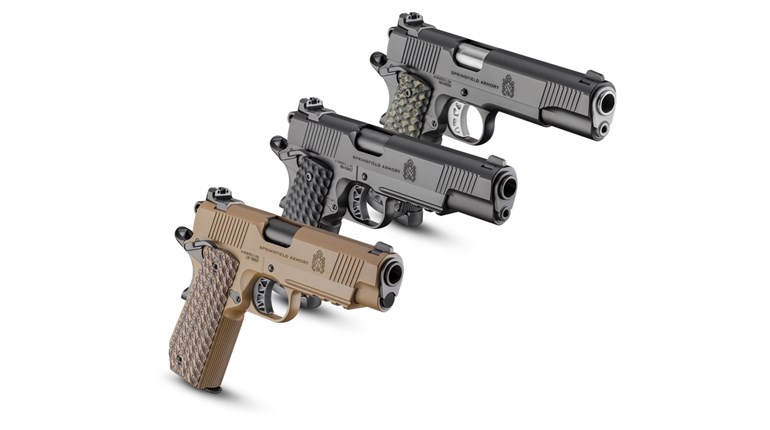
The rule changes of 2016 forever altered the landscape of service rifle competition. However, it was 2020 that changed the world.
With people confined to their homes and matches cancelled across the country due to COVID-19—competitors have been more anxious than ever to get out on the range. Some have used the time to practice, honing their skills for the next season. Others took the year off, losing motivation with nothing to look forward to. White Oak Armament (WOA) sent a shockwave through the service rifle community when it released a new optic designed with service rifle competitors in mind—a scope that sold out within days of its release.

Many competitive shooters, myself among them, were saddened when the Leupold WOA Mark AR scope, one of the first on the scene with the 2016 rule changes, went out of production. While possible to replicate the scope with modifications from the Leupold Custom Shop, one of the most affordable, dedicated service rifle scopes had ceased to exist.
In September 2020, White Oak Armament released the Distinguished Rifleman scope, a 2-year project spearheaded by WOA founder and accomplished rifleman John Holliger.
“My goal was to have a scope that had features tailored to the unique requirements of the service rifle shooter,” Holliger said. “Many of the other scopes being used have features aimed at making the scope appeal to a broader audience. I wanted a scope aimed squarely and unapologetically at the service rifle shooter.”

Though at a higher price point than the WOA Mark AR scope, $849.95 puts the new DR scope below the cost of a Nightforce Competition SR or a Leupold VX-4.5HD Service Rifle scope. The DR scope features 1-4.5 variable power in a 30 mm tube. The back of the eyepiece allows for focus adjustment, while a side knob features click adjustable parallax labeled from 10 yards to infinity, though it does spin below the 10-yard mark.
Differentiation among most service rifle scopes comes down to the reticle. A simple circle with a 7.5-MOA diameter ring around a 0.75-MOA illuminated dot combines a precise aiming point with the look of an iron sight aperture. Cant indicator lines fill the right and left edges of the field-of-view. Lines are etched 10 degrees apart to allow those who do shoot with a cant to remain consistent between shots.
Holliger included the cant lines as a result of his own experiences.
“They are simply a reference for those of us who shoot with a cant. I shoot a considerable cant sitting so I will check my cant a couple times during the 3-minute preparation period to make sure I am building my position consistently… After that I do not give them a second thought.”

The DR scope is available in two models: one with MOA knobs for windage and elevation adjustment, one with click knobs marked every five clicks for easy reference. Both styles of knobs have ¼-minute clicks, and a bottom stop with two revolutions of 25 MOA per revolution. I opted for the MOA model.
The very first thing I noticed about the DR scope was its size. Considerably larger than the Leupold WOA Mark AR scope familiar to me, I was concerned that it would be too hefty, especially in the standing position. Pleasantly surprised, I did not notice any change in weight.
I did not think twice about using the compatible lens reducer—something I believe every shooter should have. I used the smoke lens reducer to ensure that my eye was centered behind the scope and was very impressed that it threaded into the scope. Once installed, the lens reducer did not move or fall out. The included scope caps fit snugly and remained in position, unlike other scope caps I have used that spin and fall off.
There are some features I never used. I never moved the magnification from 4.5x, though I like having the option to do so. I completely ignored the cant lines, and for those who are concerned, they disappear when focusing on the circle or dot.

This was my first experience with an illuminated reticle. I could see the dot fine with the illumination turned off, though in certain light conditions it did provide a nice accent. Many competitors have spoken of “losing the dot” with other scope reticles. I always used the Leupold wide-duplex reticle and there were definitely times I have lost the crosshairs in the center. I have always favored a simple reticle and was impressed with how much I like the circle with dot system. The circle left just a small line of white around the target black. My brain immediately recognized the resemblance to aperture sights and I relaxed, settling into a process I have orchestrated countless times in Palma and smallbore.
To put the scope to the test, I fired in an Excellence-in-Competition match at Solon Sportsmen’s Association in Richmond Township, Ohio. Over the course of the match, I made several observations. I could not always see the illumination in the conditions present and ultimately decided not to use it. I started out focusing on the circle, but soon found my brain focusing on the dot as I could see the scoring rings at 200 yards. I lost a few points throughout the day as I made varying decisions to focus on the dot or the circle, but still finished in second place with a 480-11X. Impressive for a first match with a brand new scope. I had no tracking issues the entire day and actually found that with the dot in offhand I was often shooting inside my call, or rather, shooting higher scores than I thought I fired.
Overall, I consider this a fantastic scope. Though I have always preferred crosshairs, I adored the simplicity of this reticle, with the exception of the cant lines, which I forgot were there. I did not notice much in adjusting parallax between yard lines, but the ability to dial down the parallax for dry-fire practice or SCATT training is invaluable. No longer is the target too fuzzy to make an accurate call.
Learn more at whiteoakarmament.com.
See more: Review: Meprolight Foresight


































